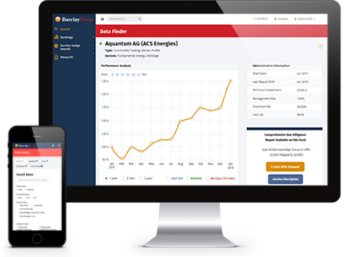Market-neutral hedge funds typically employ a number of different investment strategies (e.g. long and shorts) that individual hedge funds may specialize in. Although some investors consider market-neutral strategies to be similar (or even the same) as a long/short strategy, this article will distinguish between the two by focusing on key characteristics related to market-neutral strategies. At the core, market-neutral strategies focus on making concentrated bets, usually based on a perceived pricing asymmetry, while limiting general market exposure through a combination of long and short positions. The ultimate goal is to achieve a beta as close to zero as possible to protect against systematic risk. This strategy differs in kind from most long/short funds that are essentially seeking long or short exposure in the market through a series of trades.
There are two main market-neutral trading strategies:
- statistical arbitrage
- fundamental arbitrage
Statistical arbitrage strategies are based on finding pricing anomalies in equities (based on historical prices) that will likely "revert to the mean" over a period of time- the strategy aims to profit off of the price convergence. Other market-neutral investors have a fundamental view of a company's future trajectory, rather than algorithms, to invest in a certain stock that will ultimately converge at a certain price. In both cases, the bet in equities is covered by a series of long and short positions to eliminate market exposure.
One of the main advantages of the market neutral strategy is a greater emphasis on hedging against market volatility; this has been particularly useful over the past three years when market volatility has hit hitherto unknown peaks. While hedge funds utilizing other strategies have experienced substantial losses during that time, most equity neutral funds have performed above the average of other equity funds due to the emphasis on limited risk taking. Because market-neutral hedge fund managers attempt to place specialized bets on price convergence, and avoid exposure to general market risk, the correlation between market performance and market neutral funds has the lowest (positive) correlation of investment strategies except for shorting. This is why funds of funds (funds that invest in hedge funds) usually allocate a portion of capital to market neutral funds; their performance will outstrip other funds during times of market loss. Second, market-neutral funds are more resilient against sudden changes in liquidity due to the strategy's balanced nature. That is not to say liquidity risk doesn't exist with market neutral funds, but it tends to play a lesser role than with other strategies - particularly those that prominently feature shorting.
There are several disadvantages to the market-neutral investment strategy. The first major disadvantage is the practical ability of managers to maintain a beta of zero. While possible in theory, it is sometimes very difficult to achieve a truly market-neutral fund, especially because it is often times impossible to hedge against different risks and changing correlations between different segments of the market. A second disadvantage is that while market-neutral funds provide some insurance against downturn, they also have a limited upside in a bull market. A price of the more balanced approach is that in bull markets, market-neutral funds tend to underperform other strategies.
Overall, extreme bouts of volatility over the past few years have vaulted market-neutral funds to the forefront, particularly as a strategy that effectively manages risk. Although not all market-neutral have fulfilled the promise, the hedge funds who implement these strategies will continue to find investors, if only as a key part of portfolios seeking diversification.
Get comprehensive and up-to-date information on 6100 + Hedge Funds, Funds of Funds, and CTAs in the Barclay Global Hedge Fund Database.


